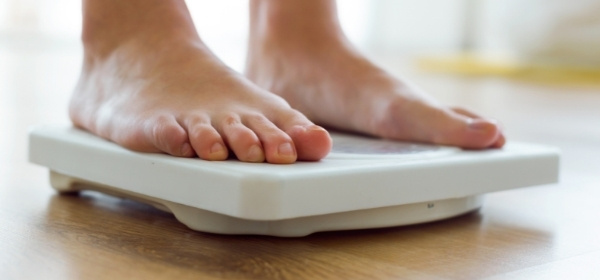Weight Loss in Seniors: Signs, Symptoms and Treatments
The cause of unintentional weight loss in elderly adults may sign an underlying medical condition. Here are some vital clues and treatments to note.

Sudden weight loss is defined as a decrease of 4.5kg or over five per cent of average weight within six to 12 months.
The interplay of calorie intake, activity level and metabolic rate determine body weight. Therefore, significant alterations involving any of these factors may result in weight loss. Unintentional weight loss, defined as the loss of 4.5kg or a decrease of more than five per cent of average body weight during a six to 12-month period, is a significant predictor of morbidity and mortality. The clinical evaluation of weight loss should include a careful history and physical examination. If these do not provide clues to the weight loss, simple diagnostic tests can provide indications. The first steps in managing elderly with weight loss are identifying and treating any specific causative or contributing conditions and providing nutritional support when indicated. SIGN AND SYMPTOMS Evaluation: The cause of involuntary weight loss is rarely mysterious. In association with directed diagnostic testing, a careful history and physical examination will identify the cause of weight loss in 75 per cent of patients. In history taking, it’s essential to determine whether the following symptoms are present: • Fever, pain, shortness of breath, cough, palpitations. • Weakness or change in the ability to taste, smell. • Abdominal pain, decreased appetite, nausea, vomiting, diarrhoea, constipation, difficulty swallowing. • Changes in urination pattern. • Dental problems. • Daily living activity changes. • Mental or functional status changes. • Risk factors for HIV infection. • Psychiatric problems. • Previous abdominal surgeries. • Appetite changes. • Tobacco, alcohol use, medications history. On physical examination, anthropometric measurements, particularly the patient’s height and weight, are of prime importance and should be compared with minimum and maximum adult weights. VITAL SIGNS • Appearance and skin: for pallor, jaundice, previous surgery scars, skin turgor. • Oral cavity: for thrush, dental disease. • Thyroid: for the enlarged thyroid gland. • Lymphatic system: for enlarged lymph nodes. • Heart and lungs: for signs of cardiac, pulmonary disease. • Abdomen; for organomegaly. • Breasts: For lumps. • Rectal/pelvic examination. • Neurological evaluations, including the Mini-mental State Examination (MMSE). COMPLICATIONS Some of the consequences of unintentional weight loss include: • Anaemia. • Decreased cognition. • Oedema. • Falls, hip fractures. • Immune dysfunction. • Infections. • Muscle loss. • Osteoporosis. • Pressure sores.

Some of the consequences of unintentional weight loss include Osteoporosis.
TREATMENT The differential diagnosis of unintended weight loss in the elderly can be extensive. However, the mnemonic “Meals on Wheels” summarises the commonly identified causes: - MEDICATIONS (e.g., digoxin, theophylline, antipsychotic agents). - EMOTIONAL problems (depression). - ANOREXIA tardive (nervosa) or alcoholism. - LATE-LIFE paranoia. - SWALLOWING disorders (dysphagia). - ORAL problems (e.g., poorly fitting dentures). - NOSOCOMIAL infections (tuberculosis, Helicobacter pylori). - WANDERING and other dementia-related behaviours. - HYPERTHYROIDISM, hypercalcemia, hypoadrenalism. - ENTERIC problems (e.g., malabsorption). - EATING problems (e.g., difficulty in self-feeding). - LOW-SALT, low-cholesterol diet. - STONES (cholelithiasis). DIAGNOSTIC TESTING Doctors should first direct diagnostic testing at clues or areas of concern found in history and physical examinations. If no indications show during a history and physical exam, initial tests include: • Complete blood count. • Erythrocyte sedimentation rate (ESR). • Electrolytes, calcium, glucose. • Renal and liver function tests. • Urinalysis. • Thyroid-stimulating hormone (TSH) test. • Chest x-ray. • Faecal occult blood test. • HIV test (for persons at risk). ROUTINE SCREENINGS FOR CANCER • Flexible sigmoidoscopy (if faecal occult blood negative and the age is above 50). • Cervical Pap Smear in women. • Mammography in women aged 40 and above. • Prostate-specific antigen in men aged 50 and above. MINI NUTRITIONAL ASSESSMENT A mini nutritional assessment includes dietary history, a patient’s psychosocial situation and nutritional therapy if indicated. The assessment observes an older adult with weight loss having a meal. The evaluation includes watching how they sit at the table; if they’re feeding themselves, are there any difficulties managing utensils? Other observations include the time spent eating, the amount consumed, checking for chewing/swallowing difficulties, and food quality.

Even if drugs successfully induce weight gain, their long–term side effects are unknown.
PHARMACOLOGICAL TREATMENTS Various agents have been used to stimulate appetite and promote weight gain. Still, none specifically indicate weight loss in older patients. Although medications may help increase the appetite and weight in older patients with unintentional weight loss, the first-line treatment shouldn’t be drugs. Even if drugs successfully induce weight gain, their long–term effects on quality of life are unknown. They also have an extensive range of severe side effects. The lists of drugs associated with weight gain include: • Tricyclic antidepressants (Amitriptyline, Desipramine). • Appetite stimulants (Dronabinol, Megestrol Acetate). • Anabolic steroids (Oxandrolone). • Glucocorticoids (Dexamethasone, Prednisolone). • Antipsychotic Agents (Haloperidol, Olanzapine). • Miscellaneous (Lithium, Omeprazole). The evaluation of weight loss in seniors sometimes yields no cause other than “unexplained”. However, if a physical cause for the weight loss exists, it usually becomes evident within six months. Therefore, continue to monitor weight loss even when the initial evaluation does not supply a diagnosis.
Source: MyHEALTH Portal, Health Ministry Malaysia.
